
Old campers have an appeal that reaches back in time and can send your imagination soaring. Let’s face it: they are cool. Who hasn’t seen one parked on a boulevard with a “for sale” sign and pictured it bouncing along behind the family car, ready for adventure and fun?
Unfortunately, campers are not quite homes, they are not quite cars, and they have their own unique systems and demands that make fixing and upgrading a challenge. Even if you have plenty of DIY experience, a camper speaks a foreign language. Consider Camper Rehab your Rosetta Stone for the language of Shasta, Dutchmen, or Airstream.
This book is a top-to-bottom guide to getting a fifth-wheel, teardrop, or other camper trailer ready for the road and beyond. From basic troubleshooting to electrical and plumbing projects, replacing interior surfaces, and clever (sometimes “retro”) decorating ideas, this book uses detailed illustrations, color photography, and a wealth of step-by-step, how-to information to get help you get your travel trailer into shape for your next big–or little–adventure.
And in case you haven’t pulled the trigger on that trailer you’re eying on Craigslist just yet, Camper Rehab also walks you through the process of evaluating a potential purchase, identifying which issues are fixable and which are dealbreakers, as well as how to spot hidden problems. Written by accomplished DIY author Chris Peterson, whose light and approachable tone is coupled with the hardworking DIY information you need, Camper Rehab is a must-have for any camper owner or dreamer.

A comprehensive history with descriptions of the world’s most significant aircraft employed as “eyes in the sky.”
For as long as there has been sustained heavier-than-air human flight, airplanes have been used to gather information about our adversaries. Less than a decade after the Wright Brothers flew at Kitty Hawk, Italian pilots were keeping tabs on Turkish foes in Libya. Today, aircraft with specialized designs and sensory equipment still cruise the skies, spying out secrets in the never-ending quest for an upper hand.
Spyplanes tackles the sprawling legacy of manned aerial reconnaissance, from hot air balloons to cloth-and-wood biplanes puttering over the Western Front, and on through every major world conflict, culminating with spyplanes cruising at supersonic speeds 85,000 feet above the Earth’s surface. Authors Norman Polmar and John Bessette offer a concise yet comprehensive overview history of aerial recon, exploring considerations such as spyplanes in military doctrine, events like the Cuban Missile Crisis and the downing of Francis Gary Powers’ U-2, the 1992 Open Skies Treaty, and the USAF’s Big Safari program.
Polmar and Bessette, along with a roster of respected aviation journalists, also profile 70 renowned fixed-wing spyplanes from World I right up to the still-conceptual hypersonic SR-72. The authors examine the design, development, and service history of each aircraft, and offer images and specification boxes that detail vital stats for each. Included are purpose-built spyplanes, as well as legendary fighters and bombers that have been retrofitted for the purpose. In addition, the authors feature preliminary chapters discussing the history of aerial surveillance and a host of sidebars that explore considerations such as spyplanes in military doctrine, events like the Cuban missile crisis and the downing of Francis Gary Powers’ U-2, the 1992 Open Skies Treaty, and the USAF’s current Big Safari program.
From prop-driven to jet-powered aircraft, this is the ultimate history and reference to those “eyes in the skies” that have added mind-bending technologies, not to mention an element of intrigue, to military aviation for more than a century.

Mark Webber was at the centre of one of the most captivating chapters in the history of Formula One. In 2010, while racing for Red Bull, he and his team mate Sebastian Vettel went head to head for the World Championship. There could only be one winner. Since retiring from Formula One Mark has concentrated on endurance racing, including the legendary Le Mans 24 Hour race. He hit the front pages of newspapers around the world in December 2014 when he slammed into the barricades in the final round of the FIA World Endurance Championship in South America, and was lucky to escape with his life. But the controversy of his relationship on and off the track with Vettel, who went on to win multiple world titles, has never been far beneath the surface. Here, for the first time, Webber tells the inside story of one of Formula One’s most intriguing battles – it is a story that goes to the heart of why the sport is loved by millions of fans around the world. In his trademark straight-talking, no-nonsense style Mark reveals his amazing life on and off the Formula One race track. From his first taste of karting to his F1 debut in 2002, scoring Minardi’s first points in three years at the Australian Grand Prix, through to his first win with Red Bull at the 2009 German Grand Prix and the year he should have been crowned World Champion. Mark Webber’s journey to the top of Formula One was every bit as determined and committed as his racing. Aussie Grit is his searingly honest story. Includes a foreword by Formula One legend Sir Jackie Stewart
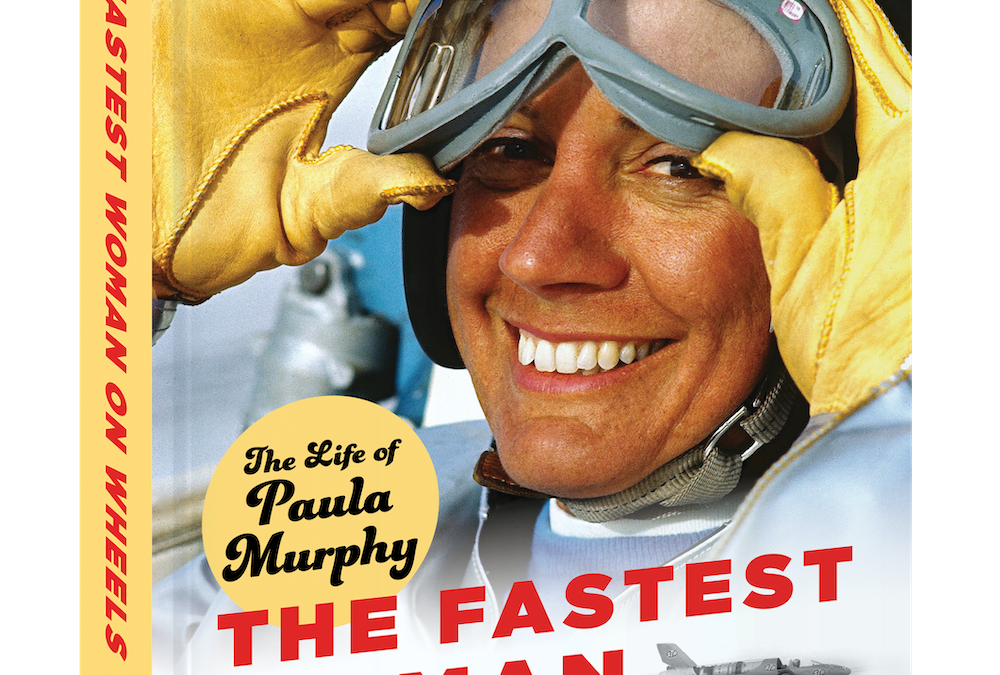
A fearless pioneer and a versatile and gifted driver, Paula Murphy was the first woman to pilot a jet car to a Bonneville Salt Flats speed record, the first woman to make laps at famed Indianapolis Motor Speedway, and the first woman to secure an NHRA Funny Car license. Throw in driving a Pontiac Sunbird literally around the world, nearly dying at the helm of a rocket car, and scoring closed-course speed records at NASCAR’s famed Talladega Superspeedway behind the wheel of cars driven by both Richard Petty and Fred Lorenzen, and you might be starting to scratch the surface of her incredible life.
Author Erik Arneson worked directly with Murphy and some of the biggest names in motor sports to dive deep into her story and relay to the world the impact this single mother from Ohio had on the world of racing. If you find the list of feats above impressive, add the Baja 1000, Mobil Economy Runs, Monaco, Union/Pure Oil Performance Trials, as well as high-speed stunts on horses, sailboats and a snowmobile and you’re starting to get close. Jump in—The Fastest Woman on Wheels is one hell of a ride.

- A stunning coffee table book of historically significant NASA photos
- Amazing photographs complemented by quotes and stories from noted personalities at NASA
- A chronological journey through NASA’s history, from Apollo to the James Webb Telescope
- Awe-inspiring, inspirational and motivational, a perfect gift and a must for your library
- Quotes from astronauts Commander James Lovell and John Glenn, as well as John F Kennedy, Ralph Waldo Emerson and many more
“The history of space exploration is best presented in this book of NASA photographs, whose images are universally inspirational.” – Commander James Lovell, Apollo 13
NASA has worked at the forefront of space exploration and research since 1958. Their devotion to furthering our understanding of what lies beyond our atmosphere has seen 12 humans walk on the surface of the moon, helped form the International Space Station, and placed numerous rovers on Mars. Voyager 1, launched by NASA on 5 September 1977, is the furthest manmade object from earth, having left our solar system entirely – and the agency’s plans for the future are equally inspiring.
This book celebrates NASA throughout the years, from its inception to its 60th anniversary in 2018, and beyond. A visual tour-de-force, the book collects high resolution NASA photos of historic significance; from rarely seen photos and the words of President John F. Kennedy commanding the space race, to the many triumphs and tragedies of the Apollo Missions, moon landings, the International Space Station, space shuttles, journeys to Mars and explorations of our galaxy’s outer reaches. These breathtaking images are complemented by heartfelt words of hopes and imagination for the future, encouraging readers to admire their world from a different perspective. NASA: the Greatest Milestones is a stunning 300 page book.
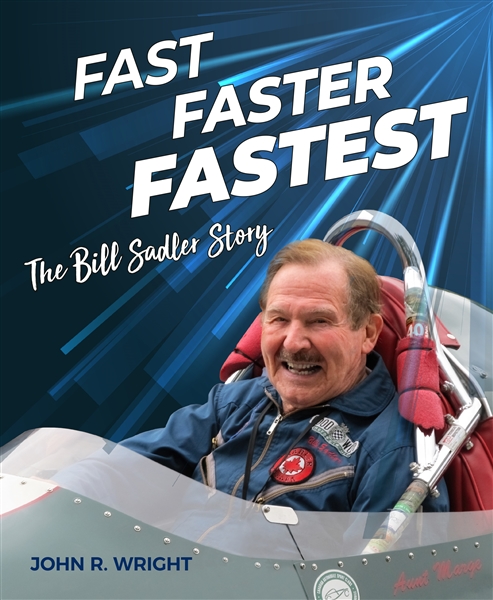
Pre-order now for early 2023 delivery
This biography of Bill Sadler tells the story of an innovator who set the racing world astir with race cars of his own invention. Progressing from a Hillman Minx convertible to one of the fastest race cars ever, to a Piranha ground attack aircraft, Bill Sadler has worked and raced throughout the US and in Area 51, a top-secret USAF facility in Nevada.
Sadler laid out the design of his first car in chalk on the floor of his shop in Hamilton, Ontario. He progressed to creating race cars, including the revolutionary Formula Libre, with its Chevrolet V-8 engine behind the driver and an open-wheeled set up, that appalled the owners of Listers, Scarabs and other racing specials. His fertile mind produced the Sadler Mark V, this time with major sponsorship from Comstock Engineering Inc.
After leaving racing in September 1961, Bill returned to school and graduated from MIT with a degree in Electronic Engineering. He worked in Area 51 on advanced secret projects and later built various prototype aircraft.
Bill returned to vintage racing in 2000 with his Sadler Mark III and later his own Sadler Formula Junior.
Written with the full cooperation of Bill Sadler before he passed away in early 2022, this book contains never-before-seen photographs and rarely heard stories from a man whose talent, like an iceberg, lay nine tenths below the surface.
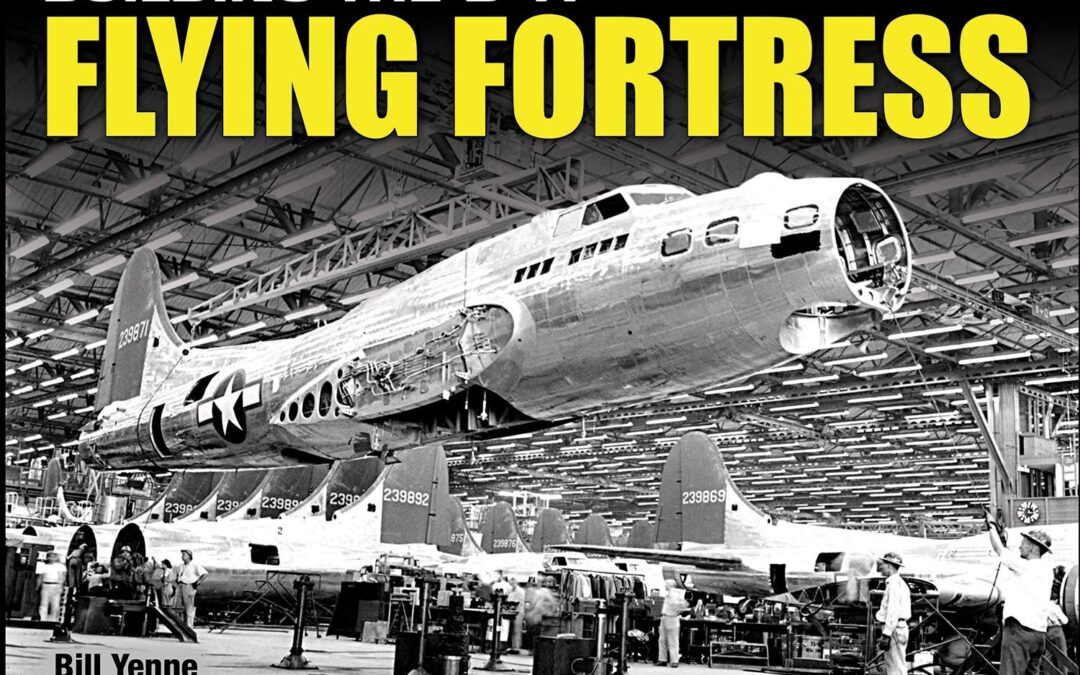
This new book reveals rare original photos and full manufacturing details of America’s greatest multi-engine combat aircraft flown in World War II. Contents cover building the Flying Fortress from wingtip to wingtip and from the bombardier’s Perspex nose to the tail-gunner’s twin-Browning cannons. Significant aspects of B-17 production include exterior views of each model variant from various angles, all crew stations in each B-17 type (including the entire flight deck), defensive gun turrets used in every B-17 model, fuselage interiors, exteriors, engines, nacelles, and even control surfaces. Factory-original color cutaway drawings as well as reproductions of original specifications sheets and other information-packed documents created by manufacturers during the 1940s are also included for the reader. As a research asset, the book’s appendices feature a detailed survey of every production block of the 12,731 B-17 bombers produced during the war in an unbelievable time span of only three-and-a-half year–an industrial phenomenon unlike any the world had ever seen.
What sets this book apart from all others in the crowded B-17 field is literally hundreds of factory-original close-up detailed photographs and illustrations accompanied by comprehensive high-resolution reproductions of original Boeing drawings, and all are explained in detailed yet easy to understand descriptive text. This book provides valuable data for the serious Boeing B-17 aficionado as well as a compelling story of America’s aircraft manufacturing prowess for the dedicated aviation enthusiast.
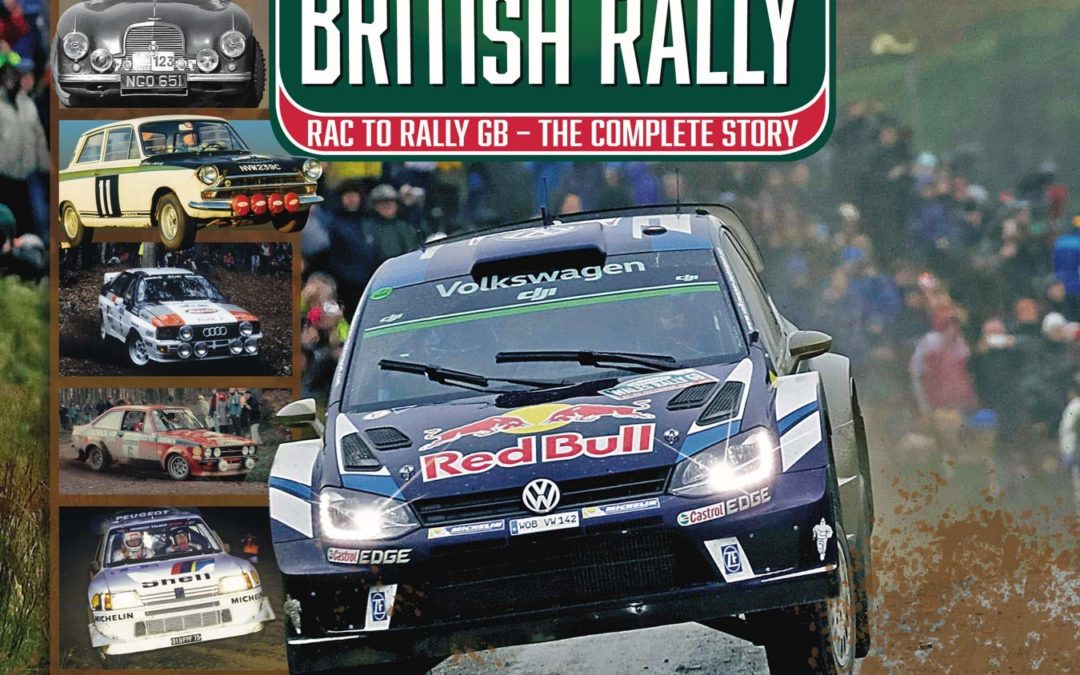
This is the complete history of British international rally events, starting with the very first RAC rally of 1932, which included 1,000 miles of road motoring, and when a mere three driving tests were needed to produce a result. By 1951 an international permit had been achieved, a speed element was included, and the ‘Rally of the Tests’ ran until 1960. From 1961, the event took on a number of high-speed, loose-surfaced Special Stages, the Scandinavian influence became clear, and the event took on a World Championship qualification in 1973. In that time, competing cars had progressed from having perhaps 50bhp to at least 300bhp, and even more high-tech machines with 500bhp and four-wheel-drive would follow.
By then the RAC Rally was – and remains, in its present form as Wales Rally GB – one of the three most important rallies in the world, every ‘works’ team makes sure that it is represented, and it has a very important image throughout the world. Major sponsors embraced the event from the 1960s – first The Sun and Daily Mirror, then Lombard, and Network Q, and finally the Welsh government – which in recent years has become a very high-profile showcase for the world’s most exciting cars. Few other British International events have such a long and distinguished record. The 75th running of this event takes place in 2019.
With year-by-year accounts of all events in the Rally’s history, copiously illustrated with period photographs, and covering the various challenges posed by such crises as foot and mouth disease, weather conditions and controversy over rules and regulations, this book is the definitive guide.

When Chrysler released the “new” third-generation Hemi engine in 2003, the automotive public placed high expectations on the Hemi’s triumphant return. The Hemi Gen III 5.7L, 6.1L, and 6.2L supercharged and 6.4L engines didn’t disappoint; they produced copious amounts of horsepower and torque while delivering exceptional durability. These powerful engines occupy the engine bays of new Challengers, Chargers, Magnums, 300C, Durangos, Jeep Grand Cherokees, and Ram trucks. Many of these engines have been used for high-performance service or logged hundreds of thousands of road miles, and as a result, many need to be rebuilt.
Long-time Mopar engineer, racing coordinator, and veteran author Larry Shepard delivers thorough instructions for each crucial step of the rebuilding process. Before commencing engine tear down, Shepard shows you how to perform compression and leak down testing to accurately assess the health of the engine. Disassembly and comprehensive inspection instructions are provided so you can determine and remedy any underlying problems. Expert insight allows you to select the ideal parts package for your rebuild, whether OEM replacement or compatible and complementary high-performance parts are selected. The most pertinent information for the latest machining practices is provided, so you can coordinate with the machine shop to return the block, head, intake, and other surfaces to like-new condition. Assembling the cylinder heads as well as accurately measuring, checking clearances, and test fitting parts is detailed, so you’re sure all components are within spec and ready for final assembly. Finally, comprehensive step-by-step instructions are provided for assembling all components into a completed engine.
The modern Hemi engine is lighter and stronger and offers far better drivability and performance than its predecessors. However, after hundreds of thousands of miles, extreme use, or high-performance applications, these rugged engines require a professional caliber rebuild. With this book, you can confidently complete your Hemi rebuild and get your car or truck back into action.
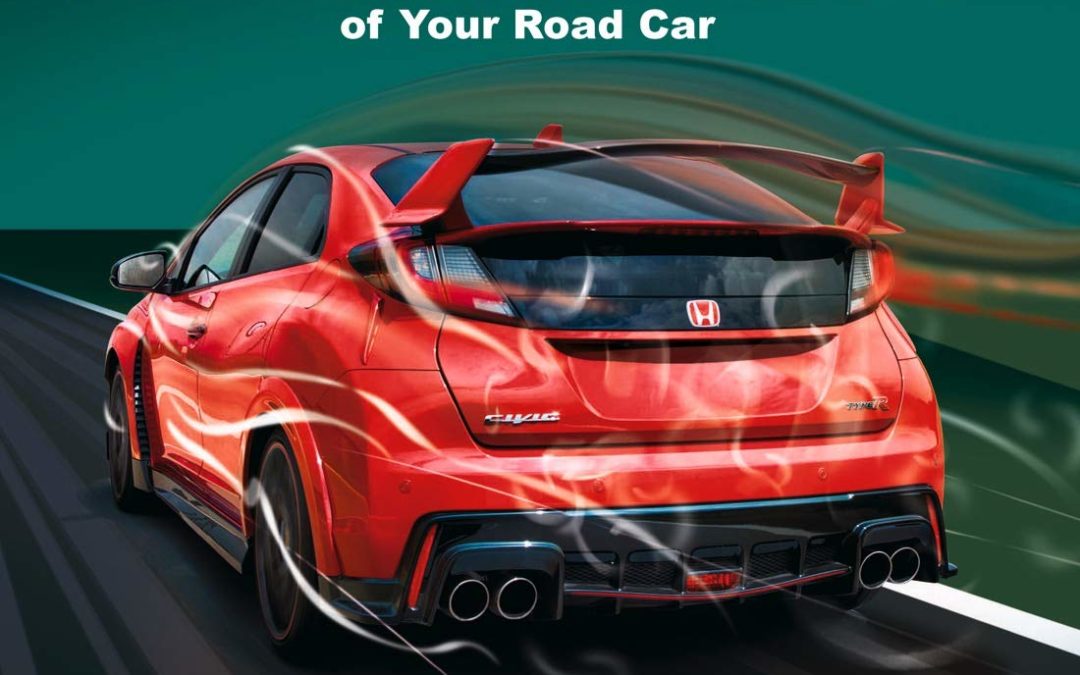
Modifying the Aerodynamics of Your Road Car is a unique handbook that assumes no starting knowledge of vehicle aerodynamics. It begins with simple ideas and finishes with sophisticated and effective aerodynamic modifications that work.
Three major chapters cover on-road testing techniques that give you all the information you need to decide what modifications you should make – and, after you’ve made them, how well they work. Low-cost techniques allow you to visualize the patterns of airflow over your car so that you can actually see the problem areas that need improvement. Uniquely, you’re also shown how to measure aerodynamic pressures, so you can determine which body surfaces are creating lift, drag and downforce. Want to work out where a wing should be placed? On-road testing to find that out is covered as well. The book also shows you how to measure downforce to see if that wing is actually working!
If you wish to reduce drag, more than ten different areas are covered. Reducing frontal area, lowering cooling system drag, optimizing vehicle ride height and rake, reducing the strength of the wake, achieving clean airflow separation and optimizing wheel designs are all covered using the latest research findings. And if you’re a performance driver, there’s a major chapter devoted to reducing lift and improving stability. This chapter includes the design and development of undertrays and diffusers, wings and spoilers. The example car developed measurable downforce when fitted with an undertray and rear diffuser, something that transformed its on-road handling.
The author has been writing about the aerodynamics of road cars for more than 25 years. He is also an experienced and proficient car modifier who has performed numerous aerodynamic modifications and upgrades to his own cars. The book’s technical consultant, RH Barnard, is an acknowledged world leading automotive aerodynamicist.
If you want a practical, hands-on guide that demystifies and explains car aerodynamics, and shows you how to make effective aerodynamic modifications to your car, this book is for you.
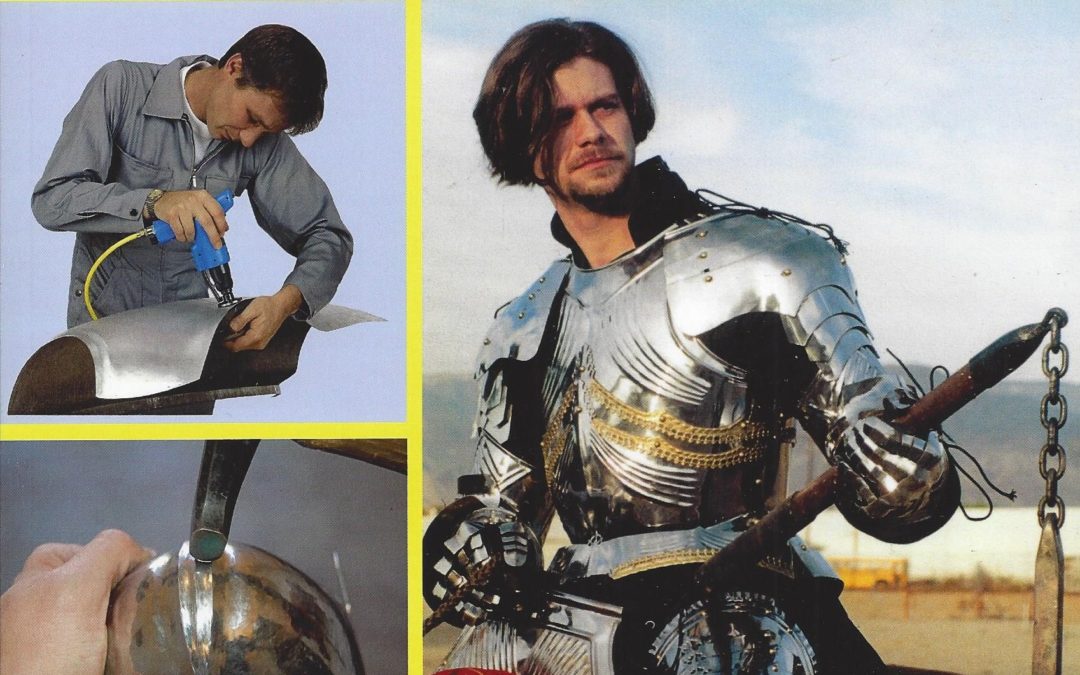
This volume contains chapters on: Making a Suit of Armour; Patterns and Templates; Hammers, Dollies, Stakes and Anvils; Stumps, Hammerforms Bludgeons and Bags; Caulking, Corking and Chasing; Sheet Metal Spinning; All About Engine Turning; Secrets of Bugatti Handscraping; All About Vixen Files; Delorean’s Stainless Steel Surface Graining, rolling, folding edging, joining options.
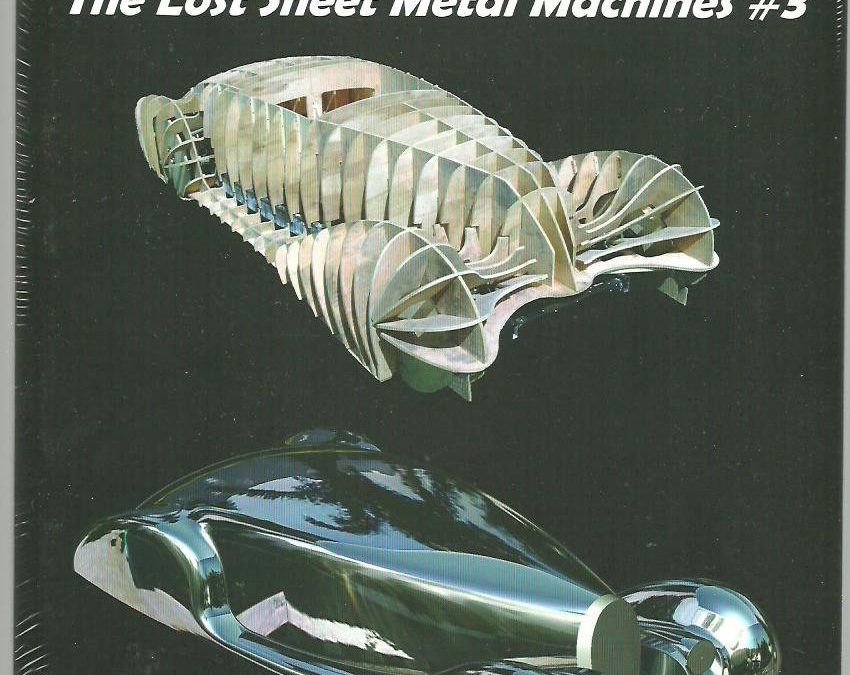
This volume contains chapters on: The Hand-Built Delahaye Project; Another Look at Digitally-Created Surfaces; Swedish Pullmax Universals, Part 1, The Machines; Swedish Pullmax Universals, Part 2, The Tooling; Shrinking and Stretching Machines; Reforming aka Contour, Profile and Finish-Forming; Eckold Ag, Lessons in Forming Sections. Includes, Body Bucks, Sheet Metal Spinning, Swedish Pullmax, Shrinkers/stretchers.
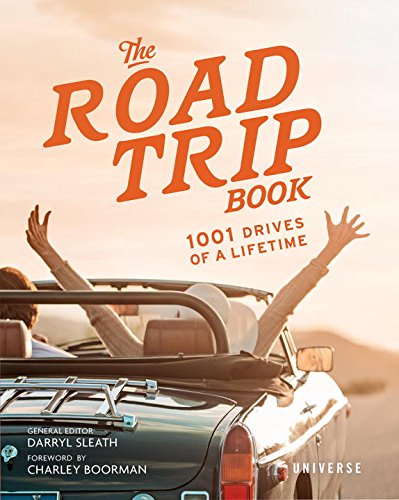
The world’s superlative road trips—scenic, thrilling, and memorable—in both natural and urban settings.
For anyone who has fallen under its spell, a car represents freedom and adventure. For decades, the American tradition of the road trip has been bound up with the idea of new possibilities and new horizons. This book is an indispensable guide to the most beautiful, breathtaking, extraordinary, and fun road trips the world has to offer.
Complete with road trips varying in length and level of challenge, from an epic transglobal route inspired by Ewan McGregor and Charley Boorman’s Long Way Round documentary series to a two-mile blast around Monaco’s F1 street circuit, there is something for any adventurer. Each entry provides information about distance, start and finish points, road surfaces, must-see stop-offs, detours, and other details to plan an unforgettable trip.
Entries are organized into three categories: Scenic, Adventure, and Culture. One can marvel at the views from Cape Town’s scenic Chapman’s Peak Drive or central California’s Pacific Coast Highway, but the thrill seeker might opt for the hair-raising ride through Montenegro’s coastal mountains to reach the medieval walled town of Sveti Stefan on the Adriatic. The culture category features routes inspired by film, literature, and history: re-create Thelma and Louise’s heart-pounding joyride (minus the final leap), savor Japan’s “Romance Road” through unspoiled small towns, or follow Jack Kerouac’s path from On the Road.

Road racing has long-storied roots in North America that reach from coast to coast and to Canada. Some of the greatest drivers to ever compete raced wickedly fast machines, staged epic duels on winding strips of asphalt, and created history. This history left an enduring legacy that is revealed and celebrated in Lost Road Courses. Road racer and road racing expert Martin Rudow retraces road racing’s glorious past and visits the defunct classic road courses across the United States and Canada.
Many road courses were built in the 1950s and 1960s, the golden age of American road racing. These classic road courses built and hosted famous races for Trans-Am, Can-Am, IndyCar, Formula 1, and sports car racing, but did not survive the times. They fell victim to changing times, poor business decisions, urban sprawl, safety standards, and increasing real estate prices. Rudow recounts the breathtaking races and fascinating history of more than 16 tracks from around North America. Riverside International Raceway, Bridgehampton Race Circuit, Ontario Motor Speedway, Continental Divide Raceway, and many others were once major race venues that have since closed. The great race teams, legendary drivers, classic race series that visited the tracks, and cars that turned laps are brought into full focus. The exploits of Chaparral, McLaren, Bud Moore, Lotus, Penske, and other race teams as well as racing greats Mario Andretti, Parnelli Jones, Jim Hall, A. J. Foyt, Al Unser, Jim Clark, and Dan Gurney are covered. Rudow also digs beneath the surface to reveal the story behind the story. The visionaries and businessmen who saw potential and risked capital to build these palaces of speed come back to life. He also recognizes the unsung heroes and regional racers who competed, staffed, and took on various roles at these tracks.
In the pages of this book, a nostalgic tour of these famous races at these vintage road circuits unfolds. Many period photos illustrate the racing action and the tracks themselves in their former glory, and modern color shows the tracks as they currently stand. If you’re a fan of classic sports car, Can-Am, Trans-Am, IndyCar, Formula 1, as well as classic and unique tracks of yesteryear, this book is a must-have.

The annual Temporada (racing season) created a transition in Argentine motor sport. In earlier years racing circuits were primarily on rough tracks, with cars designed to cope with poor surfaces. Lacking the resources or technology needed to create bespoke circuits, Argentina looked to create racing venues from what it already had: public paved parks. After WWII, the Temporadas were organised in the Torreon in Mar del Plata, Parque Independencia in Rosario, Palermo, Constanera and Retiro in Buenos Aires, and Sarmiento in Cordoba. Thanks to these races, held in public parks and on public roads, Argentina began to be seen as a potential destination for a Formula 1 Grand Prix and for a round of the world sports car championship, the Beunos Aires 1000km. The circuits hosted the likes of Billoresi, Varzi, Farina, Wimille, Ascari, Moss and Prince Bira, and arguably taught Juan Manuel Fangio how to drive race cars. Wonderfully illustrated with 220 contemporary photographs, including many that have never been published before: images that will take you back in time, to the unique atmosphere of top motorsport in South America from 1950 to 1960.

Third and final video documentary on sport’s most famous drag strip (Long Beach, Calif.); rare photos, film, interviews with leading pioneers.
Third and final episode (110-minutes) on historic Long Beach, CA drag strip features 40-plus interviews with top pioneers, including; Don Garlits, Ed Iskenderian, Hayden Proffitt, Gas Ronda, Bill �Maverick� Golden, Robert Balogh, Carl Olson, Sush Matsubara, Tom McEwen, Pat Foster, Tommy Ivo, Dale Pulde, Don Long, C. J. Hart, Larry Sutton, etc. Begins with nitro racing�s version of a heavyweight bout, as Top Fuel dragsters fight the growing trend of AFX and early Funny Cars. Huge meets ensued. Innovation led to quicker ET�s � and speeds. Funny Cars roared into the 7-second zone. Top Fuelers blazed past 220 miles-per-hour. With increased performance came danger. Straining clutches and superchargers resulted in spectacular fires, wheel-stands and crashes, with drivers in extreme peril. One of the more dramatic segments depicts the AHRA Grand American in early 1970, when Top Fuel legend �Big Daddy� Don Garlits lost part of his right foot in a horrific starting line transmission explosion. Graphic film of the accident surfaced only recently. Garlits recounts the incident, plus his equally stunning return months later with a rear-engine dragster that likewise changed the sport forever. Weekly campaigners included Jr. Fuel and Gas Dragsters, AA/Gas Supercharged, AA/Fuel Altered, Injected Funny Cars, plus wild exhibition vehicles. Manager C.J. Hart departed in 1971, replaced by innovator, Steve Evans, who switched from AHRA to NHRA sanction, and produced events like the giant Grand Premier, which saw the track�s largest number of incidents. When noise complaints spelled the end in December 1972, Lions held the racing equivalent of Woodstock, with �The Last Drag Race�, a colossal, fitting, yet tear-filled end to one of the sport�s most historic, and revered tracks.
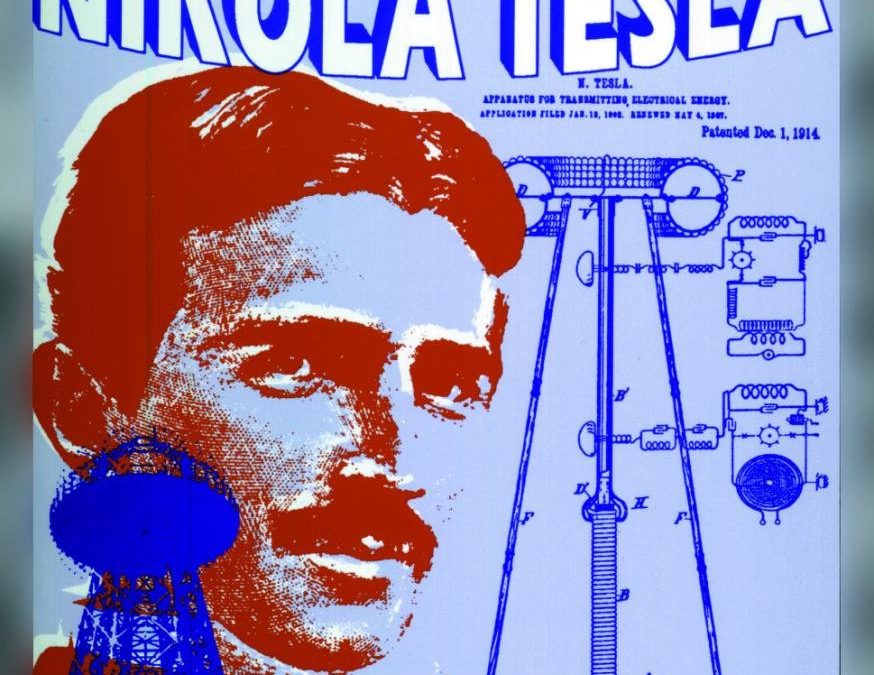
Nikola Tesla’s Electricity Unplugged is a unique anthology of hand-picked Tesla articles, arranged historically, which presents overwhelming and convincing evidence for the reality of Tesla’s high efficiency, low cost wireless power transmission. Following in the footsteps of the editor’s first book in the series, Harnessing the Wheelwork of Nature, Dr. Tom Valone’s book chronologically traces the original intention that Nikola Tesla had for his wireless electricity and how he updated and expanded upon it later on, with reprints of his key articles, to the recent genius engineers and physicists who are now finally bringing this last and most elusive, highly advanced Tesla technology into reality. The Corum article (along with the Peterson article) on the Zenneck wave transmission experiments culminates the viewpoints of all of the book’s contributors. Its purposeful placement as the last chapter of the book, is because this exclusive article publication is a major scientific breakthrough, as testified by the book’s endorsement from Brigadier General Michael Miller, and foretells the understandable, visionary road to the corporate formation of wireless power utilities. Furthermore, this is the first and only book in the world which explains how an electromagnetic wave traveling across the electrically conductive surface of the earth, was predicted by Tesla and Zenneck (two pictures in the book show them together on pages 74 and 381) and why it is the essential missing link of any Tesla wireless transmission theory. Many of the contributors also nicely explain the “surface wave phenomenon” as well as “resonant earth-ionosphere” modes of electrical transmission without wires that compliments the surface wave theory and experiment. Nikola Tesla’s Electricity Unplugged therefore is a treasure compared to any other Tesla reference book currently in print, since it is jam-packed with personal stories of Tesla, such as one reprinted from the prestigious Smithsonian magazine, along with great illustrated slideshows adapted for the book format, the “secret” history of Tesla’s wireless, the real Tesla electric car, high Q resonant power transfer examples being used today by Qualcomm, “Tesla unplugged” explained in an easy-to-understand presentation by a Brookhaven National Lab scientist, wireless electricity article based on scalar waves, even including a couple amazing rigorous equation articles with wireless solutions for the tech audience, a unique and evocative Foreword by Nikola Tesla’s last living direct descendant, all presented in a 457-page paperback book, suitable as a college or high school reader, or simply as an eye-opening, optimistic window onto the electrical genius regarded as the “Master of Lightning,” with a priceless collection of nineteen (19) contributors not available anywhere else.


Porting heads is an art and science. It takes a craftsman’s touch to shape the surfaces of the head for the optimal flow characteristics and the best performance. Porting demands the right tools, skills, and application of knowledge. Few other engine builders have the same level of knowledge and skill porting engine heads as David Vizard. All the aspects of porting stock as well as aftermarket heads in aluminum and cast-iron constructions are covered. Vizard goes into great depth and detail on porting aftermarket heads. Starting with the basic techniques up to more advanced techniques, you are shown how to port iron and aluminum heads as well as benefits of hand and CNC porting. You are also shown how to build a high-quality flow bench at home so you can test your work and obtain professional results. Vizard shows how to optimize flow paths through the heads, past the valves, and into the combustion chamber. The book covers blending the bowls, a basic porting procedure, and also covers pocket porting, porting the intake runners, and many advanced procedures. These advanced procedures include unshrouding valves, porting a shortside turn from the floor of the port down toward the valve seat, and developing the ideal port area and angle. All of these changes combine to produce optimal flow velocity through the engine for maximum power.
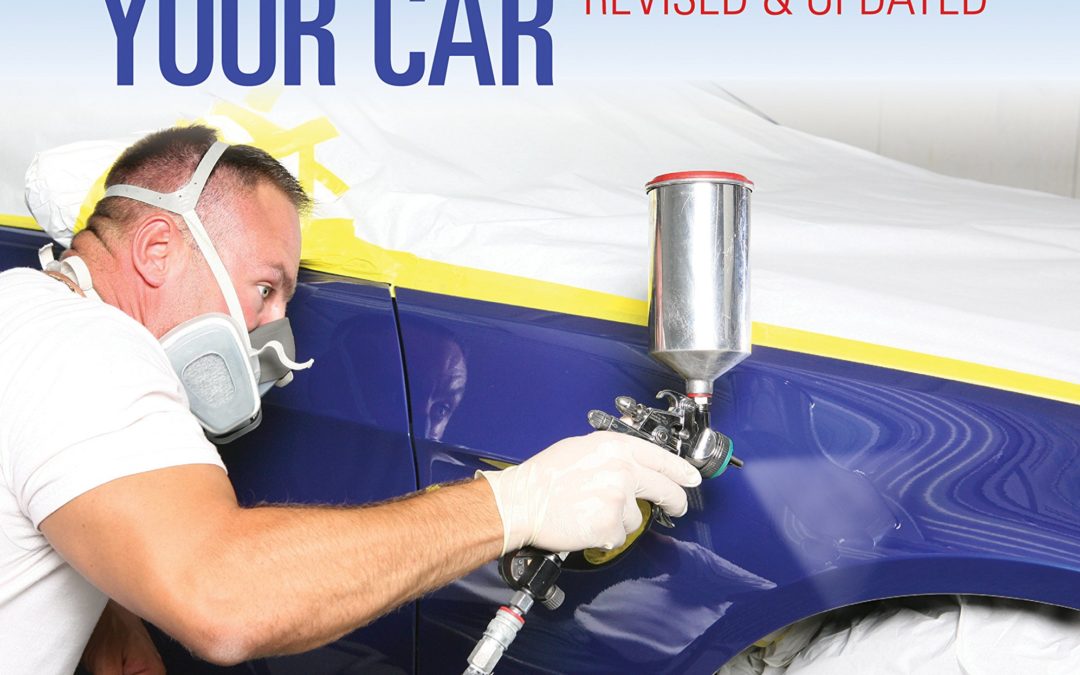
How to Paint Your Car reveals the techniques, tricks, and technology behind automotive painting through 400 color photos, clear captions, detailed text, and step-by-step how-to sequences. You’ll learn the latest information about paint chemistry, waterborne paints, spray guns, body fillers, surface prep, site prep, as well as respirators and other safety gear that every automotive painter must know.
With step-by-step detail, you’ll learn how to properly prepare your car for paint work, including minor bodywork, surface preparation, rust removal, masking, priming and final coating. How to Paint Your Car also includes information about custom touches and effects as well as how to care for your paint after application, including information on buffing compounds, waxes, and other care products. Everything you need to know to feel comfortable and confident in undertaking your own paint project, whether a touch-up job or a complete respray, is covered in How to Paint Your Car.






















